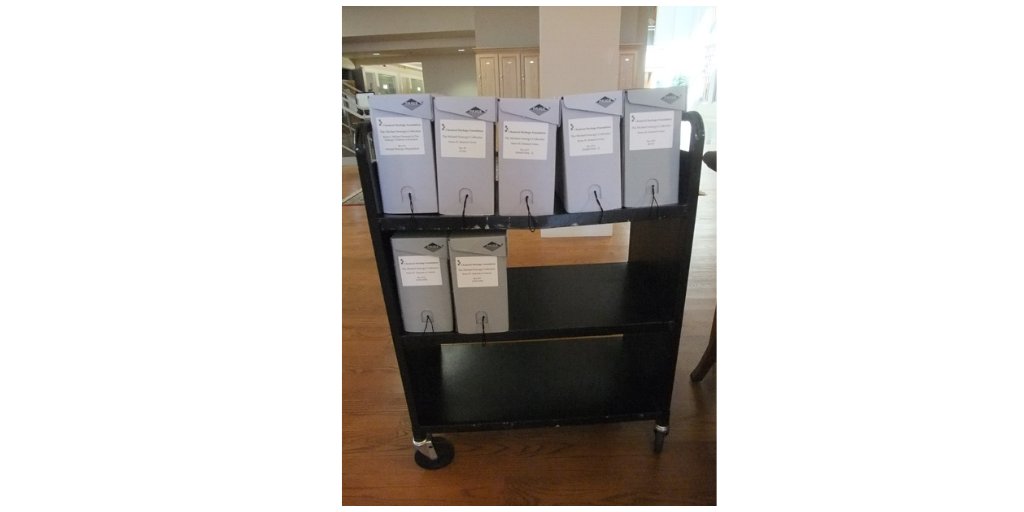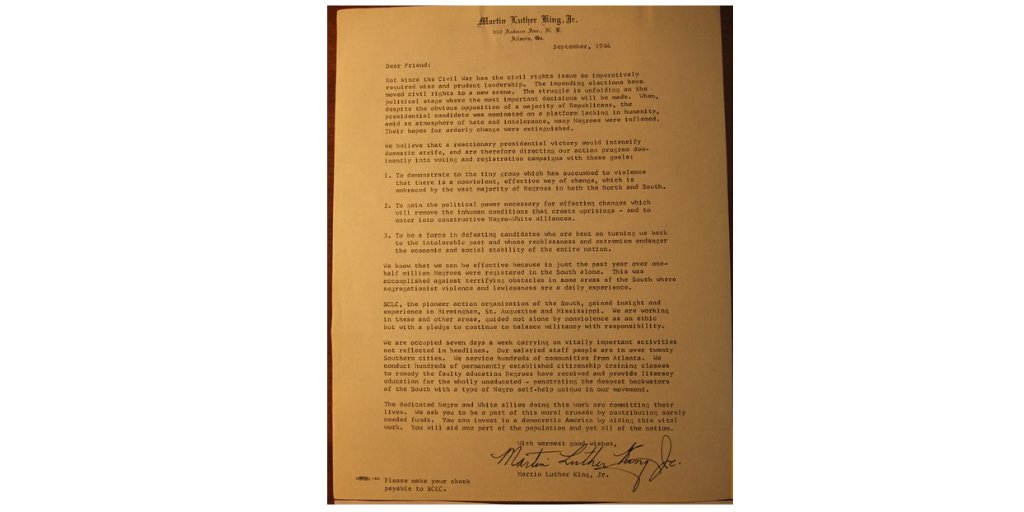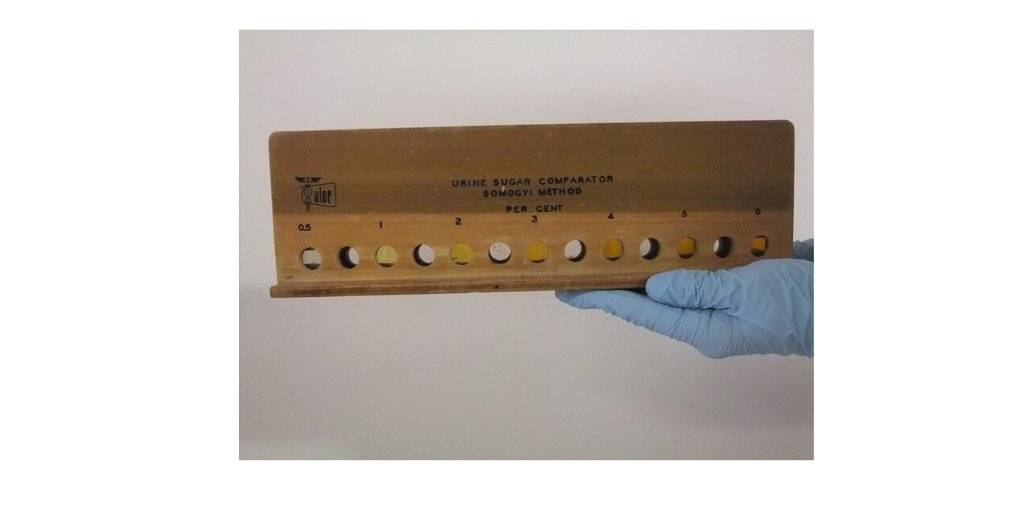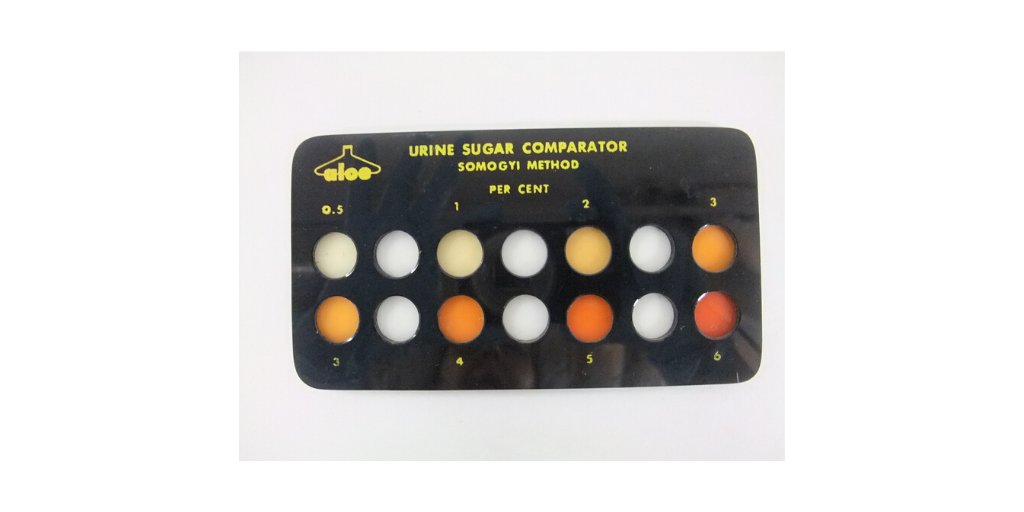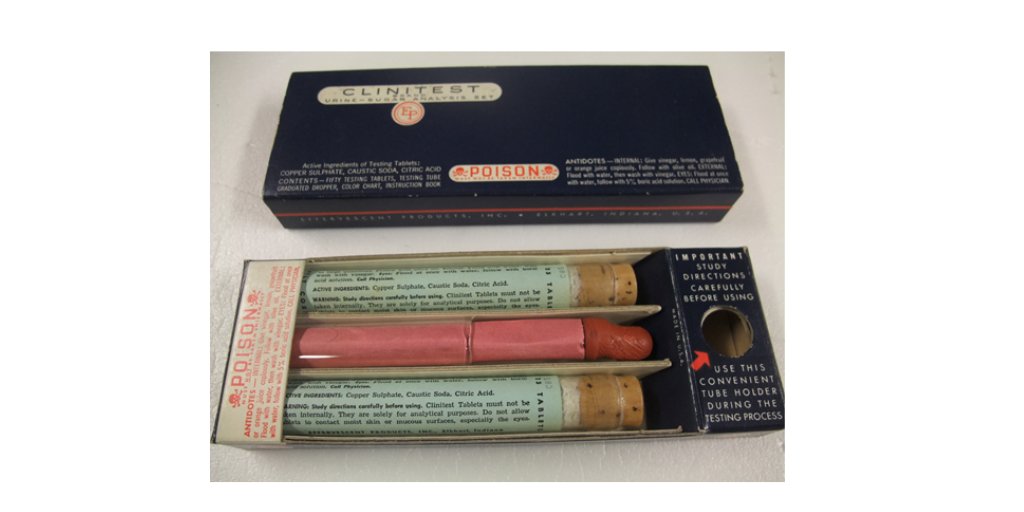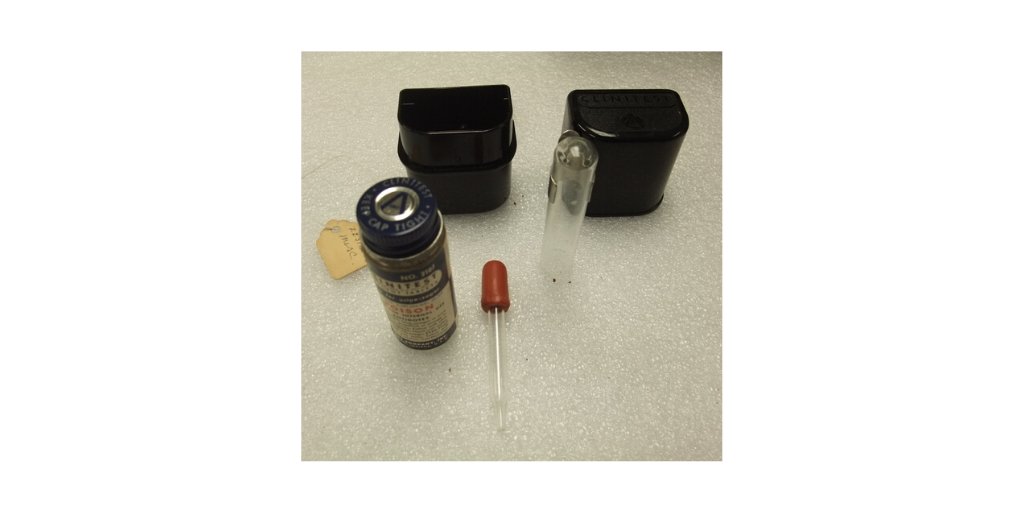In 1929 Abraham Sheftel modified Benedict’s reagent to use colours for quantification. The urine turned a different colour depending on how much sugar it contained. Colours meant numbers. #FellowFriday
The user compared the colour in the test tube to a chart to get the percentage and know how much insulin was needed. This chart is from 1938. Almost all the colours of the rainbow. #FellowFriday
Part of the history of sugar testing is how tests got easier to use. Not simpler. More knowledge and expertise went into their design. Chemists did more heavy lifting, so the testers did not have to. Their knowledge became part of the material of the test itself. #FellowFriday
This kit was popular in the 40s. Reagents were in one tablet, heat source in the other. The tester added urine with an eyedropper to the reagent tablet and lit the heat tablet in a little tray under the test tube then checked the colours on the chart.  https://abs.twimg.com/emoji/v2/... draggable="false" alt="📷" title="Camera" aria-label="Emoji: Camera">SHI and NMAH #FellowFriday
https://abs.twimg.com/emoji/v2/... draggable="false" alt="📷" title="Camera" aria-label="Emoji: Camera">SHI and NMAH #FellowFriday
At the SHI I am also studying papers and material from diabetes specialist Michael Somogyi. He was part of the first team to develop and use insulin in the US. 20th century archival material comes in many forms. Cassette tapes were not designed for the ages.  https://abs.twimg.com/emoji/v2/... draggable="false" alt="☹" title="Frowning face" aria-label="Emoji: Frowning face"> #FellowFriday
https://abs.twimg.com/emoji/v2/... draggable="false" alt="☹" title="Frowning face" aria-label="Emoji: Frowning face"> #FellowFriday
Somogyi developed his own urine sugar test methods. They’re in here somewhere…
He also wrote his notes on scrap paper. This was on the other side on one page. I learned a lot about his politics from his re-used notepaper. #FellowFriday
He also wrote his notes on scrap paper. This was on the other side on one page. I learned a lot about his politics from his re-used notepaper. #FellowFriday
Diabetics had to test regularly, but existing tests weren’t designed for them. Somogyi’s method was simple and inexpensive. This was important, since patients tested up to 10x a day. It was based on carmalizing urine sugar by heating it with sodium carbonate. #FellowFriday
(yes, urine sugar caramelizes like regular sugar) #FellowFriday
Somogyi used colours for numbers too. These 3 comparators do the same thing differently. Their materials affect how they functioned. The plastic one was needed to be washed often. The paper one faded quickly. The wooden one for GPs had “permanent standards” built in #FellowFriday
In 1941, biochemists who created Alka Seltzer used that expertise to make a urine test tablet that bubbled and didn’t need a heat source. This was the first urine sugar test that was designed specifically to be used for diagnosis and monitoring. #FellowFriday
All that chemical expertise made it easy to use. But it still meant washing glassware, burned fingers from the hot test tube, and lots of hand-washing because it was poisonous. #FellowFriday
Hey! It& #39;s lunchtime already! Be back soon.

 Read on Twitter
Read on Twitter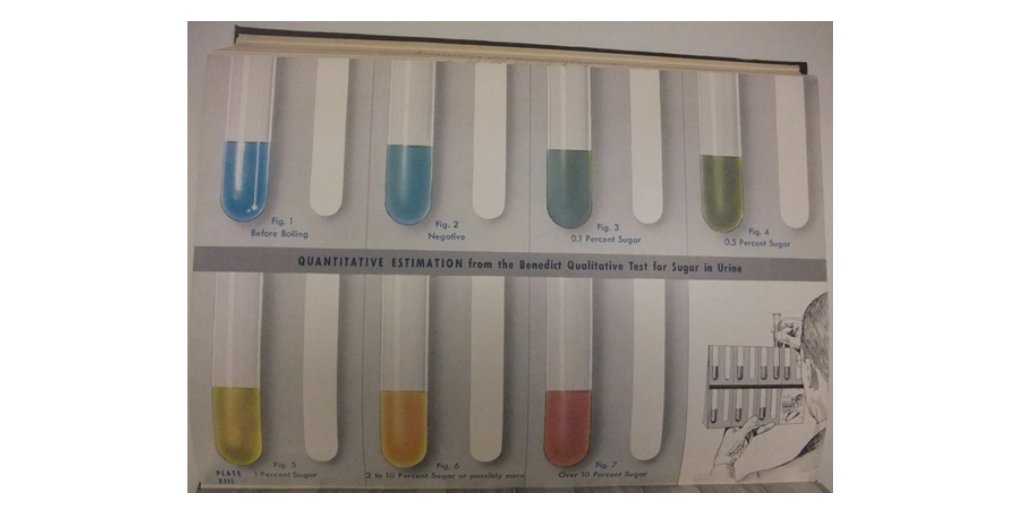
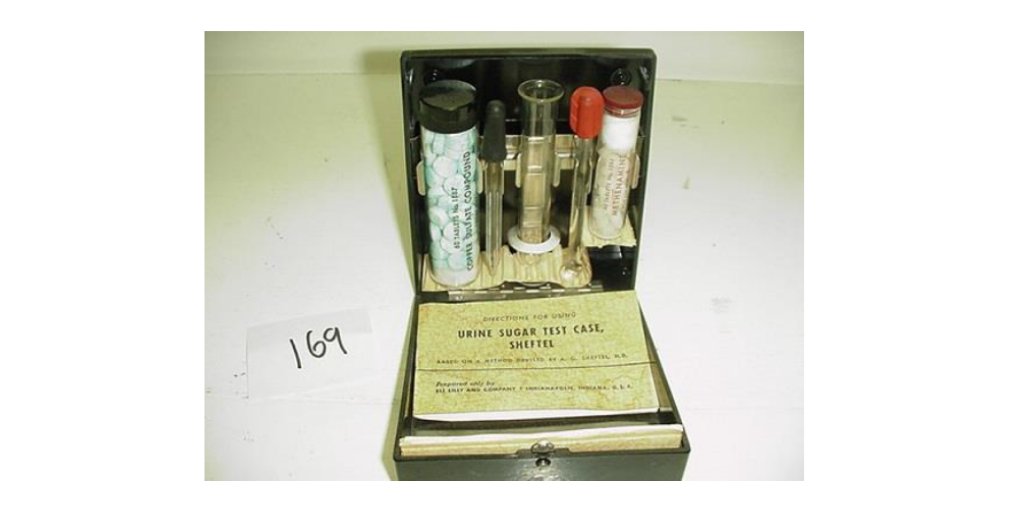 SHI and NMAH #FellowFriday" title="This kit was popular in the 40s. Reagents were in one tablet, heat source in the other. The tester added urine with an eyedropper to the reagent tablet and lit the heat tablet in a little tray under the test tube then checked the colours on the chart. https://abs.twimg.com/emoji/v2/... draggable="false" alt="📷" title="Camera" aria-label="Emoji: Camera">SHI and NMAH #FellowFriday">
SHI and NMAH #FellowFriday" title="This kit was popular in the 40s. Reagents were in one tablet, heat source in the other. The tester added urine with an eyedropper to the reagent tablet and lit the heat tablet in a little tray under the test tube then checked the colours on the chart. https://abs.twimg.com/emoji/v2/... draggable="false" alt="📷" title="Camera" aria-label="Emoji: Camera">SHI and NMAH #FellowFriday">
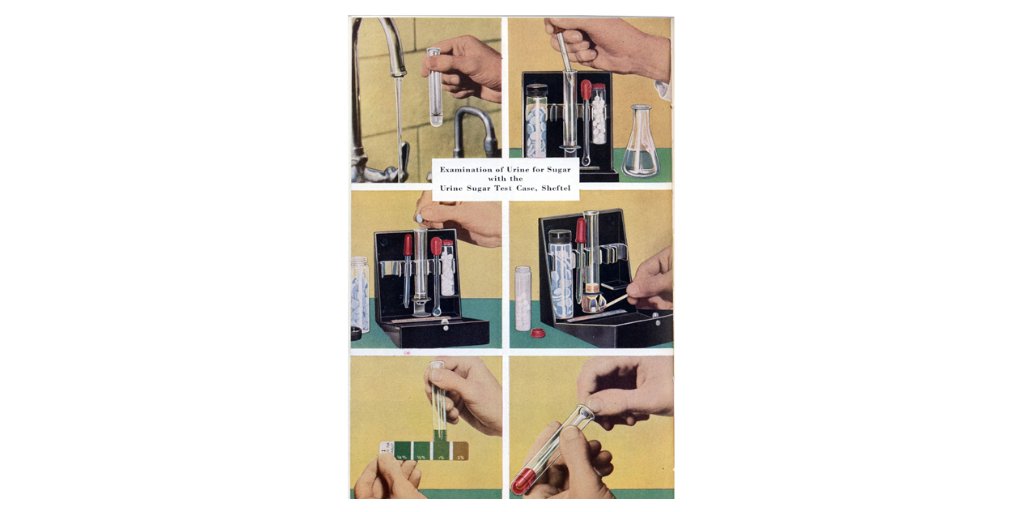 SHI and NMAH #FellowFriday" title="This kit was popular in the 40s. Reagents were in one tablet, heat source in the other. The tester added urine with an eyedropper to the reagent tablet and lit the heat tablet in a little tray under the test tube then checked the colours on the chart. https://abs.twimg.com/emoji/v2/... draggable="false" alt="📷" title="Camera" aria-label="Emoji: Camera">SHI and NMAH #FellowFriday">
SHI and NMAH #FellowFriday" title="This kit was popular in the 40s. Reagents were in one tablet, heat source in the other. The tester added urine with an eyedropper to the reagent tablet and lit the heat tablet in a little tray under the test tube then checked the colours on the chart. https://abs.twimg.com/emoji/v2/... draggable="false" alt="📷" title="Camera" aria-label="Emoji: Camera">SHI and NMAH #FellowFriday">
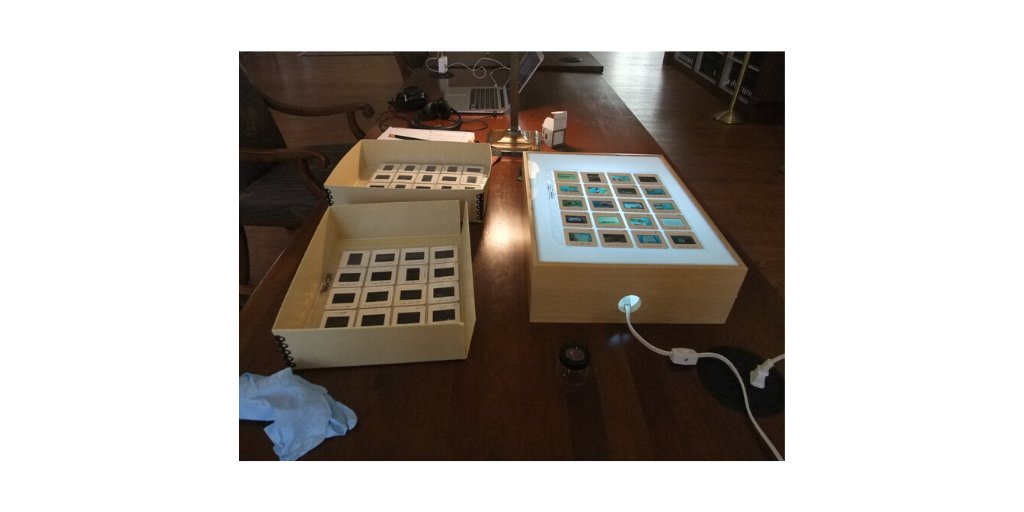 #FellowFriday" title="At the SHI I am also studying papers and material from diabetes specialist Michael Somogyi. He was part of the first team to develop and use insulin in the US. 20th century archival material comes in many forms. Cassette tapes were not designed for the ages. https://abs.twimg.com/emoji/v2/... draggable="false" alt="☹" title="Frowning face" aria-label="Emoji: Frowning face"> #FellowFriday">
#FellowFriday" title="At the SHI I am also studying papers and material from diabetes specialist Michael Somogyi. He was part of the first team to develop and use insulin in the US. 20th century archival material comes in many forms. Cassette tapes were not designed for the ages. https://abs.twimg.com/emoji/v2/... draggable="false" alt="☹" title="Frowning face" aria-label="Emoji: Frowning face"> #FellowFriday">
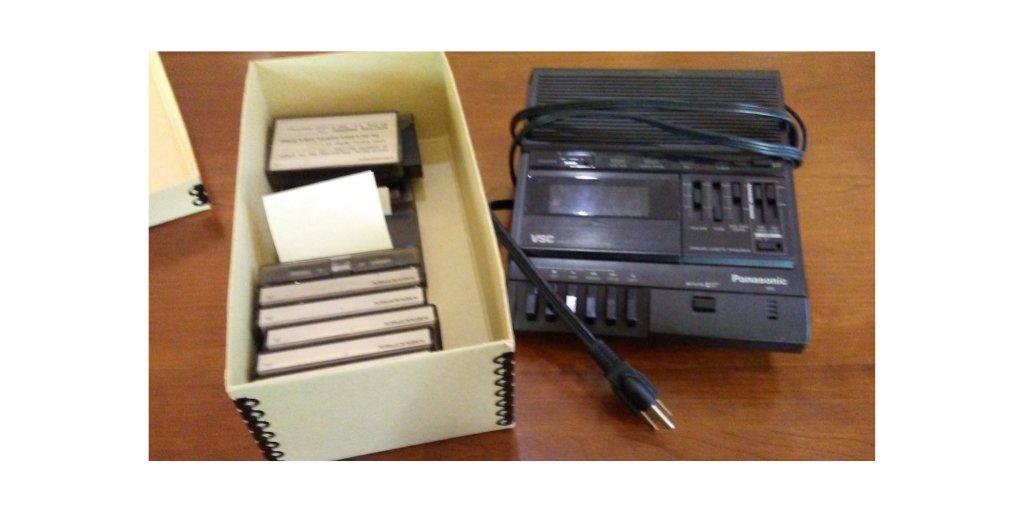 #FellowFriday" title="At the SHI I am also studying papers and material from diabetes specialist Michael Somogyi. He was part of the first team to develop and use insulin in the US. 20th century archival material comes in many forms. Cassette tapes were not designed for the ages. https://abs.twimg.com/emoji/v2/... draggable="false" alt="☹" title="Frowning face" aria-label="Emoji: Frowning face"> #FellowFriday">
#FellowFriday" title="At the SHI I am also studying papers and material from diabetes specialist Michael Somogyi. He was part of the first team to develop and use insulin in the US. 20th century archival material comes in many forms. Cassette tapes were not designed for the ages. https://abs.twimg.com/emoji/v2/... draggable="false" alt="☹" title="Frowning face" aria-label="Emoji: Frowning face"> #FellowFriday">
